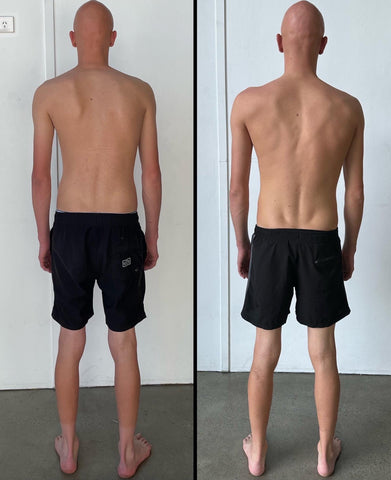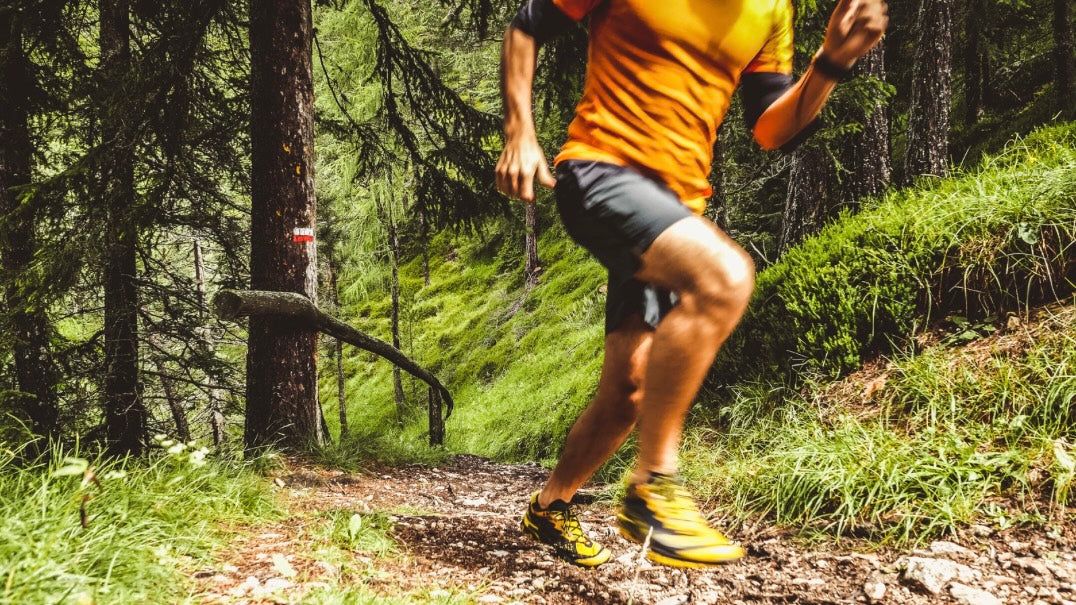Introduction
Trail running has evolved into a captivating fitness pursuit, promising enthusiasts the allure of robust legs and sculpted abs forged through the satisfying accumulation of kilometers. It often concludes with a selfie session and a refreshing sip from the ubiquitous camelback. A quick Instagram search under the trail running hashtag reveals a plethora of posts showcasing long-distance running accomplishments or flaunting chiseled physiques against picturesque mountain backdrops, seemingly relishing the experience.

However, amid the well-documented benefits of immersing oneself in nature, the persistent pounding on the ground and enduring long distances can unveil significant challenges in the form of postural, muscular, and structural imbalances specific to trail running. Today, we delve into the less-explored facets of trail running, shedding light on the drawbacks associated with covering extensive distances on trails. Additionally, we'll explore more effective workout alternatives that can help you harness the rejuvenating power of nature. Join us as we navigate through the intricacies of optimizing outdoor workouts for both physical well-being and symmetry.
Optimizing Outdoor Runs
At Functional Patterns, we wholeheartedly advocate embracing the outdoors and basking in the natural light. Recognizing that our evolutionary roots lie in nature, it follows that our bodies thrive in such environments. The blue light emitted by modern LED lights can disrupt our circadian rhythm, emphasizing the importance of training in outdoor settings to attain freakish levels of health.
Embracing the myriad benefits of outdoor running demands a meticulous focus on precision and optimal muscular engagement. This mindful approach reflects our dedication to cultivating a seamless connection between the body and its natural environment. Beginning with running on a field serves as an excellent initial step before venturing onto trails, minimizing variables such as pine cones and rocks for a smoother and safer experience.
Potential Negative Side Effects of Trail Running:- Navigating Terrain Challenges: Embracing the rugged beauty of trail running entails traversing uneven and demanding landscapes, heightening vulnerability to injuries like sprained ankles, shin splints, and knee discomfort. The diverse surfaces further compound risks, increasing the likelihood of slips, trips, and falls. Compounding these challenges for many individuals is the prevalence of common biomechanical dysfunctions, such as noticeable knee valgus or varus during running, amplifying the overall instability of the body.
- Overuse Injuries: Running long distances or on uneven surfaces without proper training and recovery can lead to overuse injuries. Conditions like stress fractures, tendonitis, and muscle strains may occur due to repetitive stress on specific areas of the body. When we have dysfunctions, the chance of an overuse injury increases while running trail.
- Muscle Imbalances: Trail running challenges diverse muscle groups to accommodate varying terrains. Yet, pre-existing muscle imbalances or weaknesses may intensify, increasing the risk of discomfort or injury. An important consideration is that trail running might not enhance your overall body symmetry; instead, it could reinforce asymmetries in an already imbalanced physique, hindering the development of a harmonious running form. Prioritizing proper running mechanics should take precedence, relegating intense cardio efforts to a secondary role, especially if your goal is to cultivate long-term health and a well-balanced physique.

Addressing Muscle Imbalances with Functional Patterns

Hormonal Imbalance
Prolonged and intense cardio while running trails, particularly without adequate rest, can induce hormonal imbalances, notably elevated cortisol levels—the primary stress hormone. The physical stress on the body during extended exercise contributes to this hormonal shift. The chronic elevation of cortisol is closely associated with symptoms such as anxiety, irritability, and an intensified stress response. When the body becomes more imbalanced from running trail, these hormonal imbalances are even more amplified.
Here is an article with more information detailing the benefits and negative externalities of long distance running.
Sympathetic Nervous System Dominance
Additionally, intense and prolonged cardio running trails can result in the excessive activation of the sympathetic nervous system, responsible for the "fight or flight" response. Chronic dominance of this system creates a continuous state of heightened alertness, making it challenging for both the body and mind to relax. This perpetual alertness may contribute significantly to feelings of stress, anxiety, and burnout over time. We think it is best to be in a parasympathetic tone, since most of our daily lives are stressful with work, etc. This is the state where our muscles repair and also allows us to rest and digest food. This is the state we want to be in when in nature (most of the time) if we want to achieve freakish levels of health.

Unleashing Potential: Reclaiming Our Evolutionary Heritage for Enhanced Physicality
While we've explored the drawbacks of trail running, there might be untapped benefits to this practice. Homo erectus, one of our ancient ancestors, was probably a very efficient long-distance persistence hunter, thanks to specific genetic and bone structures. Modern humans, however, often lack these attributes, necessitating a focus on developing a more robust framework. At Functional Patterns, our mission revolves around optimizing fundamental functions like standing, walking, running, and throwing—key elements in our evolutionary past. Embracing these practices can unlock our physical potential beyond the confines of trails, offering a pathway to enhanced physicality.

Elevating Your Gait Cycle with Functional Patterns
At Functional Patterns, our mission is to refine your gait cycle to near-perfection. While pursuing this optimal running form, consider a strategic approach by temporarily avoiding added obstacles and varied terrains. For those aiming to enhance their gait cycle, opting for a field run without additional obstacles can prove to be more effective. Usually sprints or short distances are recommended.
In the realm of Functional Patterns (FP), our experience highlights the significance of meticulously addressing underlying issues before integrating diverse training modalities, such as navigating tree-strewn trails or uneven terrain. Contrary to common assumptions, broadening the spectrum of activities doesn't always equate to enhanced performance. A thoughtful pause to assess our training needs becomes the initial imperative.
The Movement Elimination Protocol | Functional Patterns Approved
FP's approach underscores the importance of aligning posture and implementing exercises that not only build muscle but also transform the running gait cycle through targeted FP exercises. For those seeking a comprehensive understanding, our 10-week online course delves into how myofascial restrictions and posture misalignments can profoundly impact overall body functionality and vitality. These basic postural positions and movement patterns offered in the course are essential for anyone seeking a better framework and running gait cycle.
If ascending mountainous trails to enjoy the panoramic view is your preference, having a robust body ready to handle the demands of the natural environment is crucial. Therefore, after completing the 10-week online course, we recommend progressing to the Functional Training System. This system boasts a vast library of exercises featuring varied multiplane movements to prepare you for the challenges of navigating uneven terrains. Additionally, consulting with a Functional Patterns Human Biomechanics specialist is advisable. They can conduct a thorough analysis of your running gait cycle using slow-motion video, capture images of your standing posture, and tailor a treatment plan addressing your specific dysfunctions and fitness goals.
While venturing into nature to push our bodies to the limits is often celebrated, at Functional Patterns, we approach this perspective with caution. Engaging in rigorous trail running races, in the long run, may lead to pain and injury as individuals age, consequently adding pressure to the healthcare system and human biomechanics practitioners like us. For this reason, we do not endorse the idea of competing in these trail running races. Opting for a slower-paced walk or jog along trails to appreciate scenic views might be a healthier option. We believe in addressing dysfunctions and harnessing the regenerative powers of nature, especially through relaxed activities like camping or sitting around a campfire.

Embracing Boredom for Health
In addition, we encourage you to embrace moments of boredom, especially in nature. Dedicate a brief 20 minutes or longer to sit alone with your thoughts, allowing your mind to process and reset. This practice not only enhances mental well-being but also serves as a powerful tool for the body to enter a state of anabolic repair, contributing to overall health and vitality.
More on the health benefits of embracing boredom here:
Functions of Meditation Retreats and How to Reach a Calm Focus
In Conclusion
As we traverse the captivating world of trail running, the captivating scenery and physical challenges unfold alongside potential pitfalls. Beyond the exhilaration lies a terrain fraught with risks—uneven paths, overuse injuries, and the reinforcement of muscular imbalances. In response, Functional Patterns emerges as a pragmatic ally, delving into the intricacies of gait cycles and advocating for a deliberate running strategy. The 10-week online course lays the groundwork, paving the way for a seamless transition to the Functional Training System. Expert guidance from FP Human Biomechanics specialists ensures a tailored plan for individual needs. Yet, a word of caution echoes against the rush of trail races, advocating for a measured pace. Embrace nature not through a sprint but a stroll, letting Functional Patterns guide your journey to a resilient and balanced running experience.







